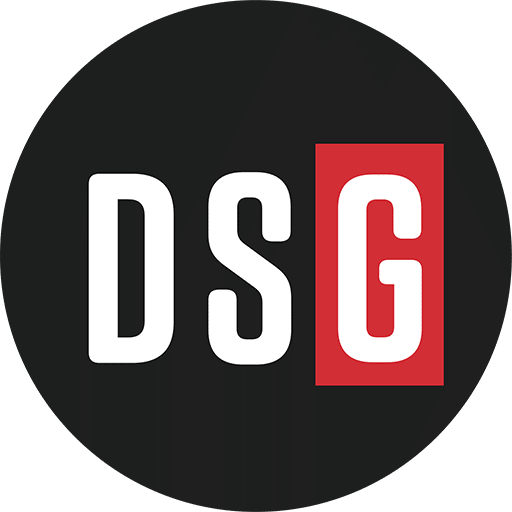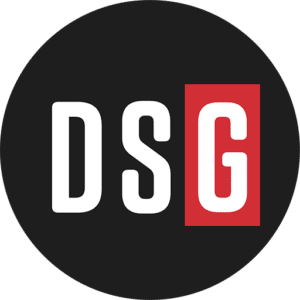Poor cash flow management has very real consequences.
Companies like AZP Multifamily rock the distribution world when they go out of business. In many cases, the company looks good on paper; AZP had an estimated $155 million in annual sales. But behind the scenes, cash flow issues can stop operations in their tracks.
Ian Heller, Co-Founder and Chief Strategy Officer for Distribution Strategy Group (DSG), talked with two industry experts about the importance of cash flow and how technology can help distributors keep the lights on. The panel included:
- Frank Heenan, Group Vice President, Lumber and Building Materials, Epicor
- Mo Barsema, Industry Principal, Enable software
What tricks of the trade do distributors need to keep cash flow flowing? How can technology enable the operational transparency required?
Missed the webinar? Check it out on-demand here.
The Role of Transparency in Cash Flow Management
CFOs must do more than keep cash flowing. They must also educate and engage stakeholders to achieve a balanced bottom line. Barsema, who has served as a CFO, said keeping an eye on the balance sheet and income statement – as well as sharing that information with key players is important.
The idea of transparency around cash flow across departments is a good one. Heenan said silos can occur in singularly focused departments. “If they’re a sales-driven organization, it’s all about, ‘I need more inventory to sell!’ They don’t care about the backend collections, cash on the street terms, receiving margins, and so on. But effective ERP systems should create discipline and process around these are the margins and terms we will accept.”
Technology can facilitate communication, which Barsema says is critical. Heenan agrees that these tools can also set guideposts around best practices in spending and selling to ensure effective cash flow management.
“You don’t want the CSR to be the bad cop,” Heenan said. “But if a bad paying customer approaches your distributorship, you want the technology to show the CSR they’re 190 days outstanding. It allows the CSR to say, ‘This is what your buying patterns look like. If we can rectify some of these things, I can help you.’”
Cash Flow Metrics
Heenan said there are two key metrics distributors must manage to understand cash flow:
- Revenue per employee
- Days outstanding
Heenan says these benchmarks are significant because they’re accountability tools. For example, field sales reps should understand where their customers stand on making their payments. Heenan advocates empowering sales reps to talk to their clients about their outstanding days. He suggests incentivizing field teams to pull that revenue in for a better bottom line.
Barsema suggested another best practice is to look at when sales reps get paid. In the past, many distributors paid sales reps when they invoiced the customer. “We realized some of these customers we’re supporting aren’t paying us on time, plus we’re paying commission.”
It leaves the distributor acting as a bank, extending receivables. Changing the commission payout to when the distributor gets paid may be contentious at first, but it keeps sales teams aware of cash flow and its impact on their work. “It deepens the relationship with the customers struggling to pay because now the sales rep joins the conversation,” Barsema said.
Barsema suggested segmenting customers by their propensity to pay with strict A/R rules to control cash flow. “It made us smarter on who we go to business with. It made our customers understand the impact of cash flow on our ability to supply them with products.”
Again, she recommended transparency around the customer rankings to collaborate with the sales team and other departments, so everyone was on the same page around cash flow and why it matters. The entire cash flow cycle can begin to turn more effectively when everyone understands where the bottom line really stands and why it matters.
Heenan pointed out the importance of these changes. “Not every distributorship is operationally focused. They may be sales focused, and the top line’s great, but their EBITDA and margin are in trouble.” Companies potentially fund months of operations out of pocket because their A/R is 80 or more days. “That represents a huge difference in risk, cash flow and profitably in the long run. You’ve got to manage this stuff responsibly, or you erode competitiveness,” Heenan said.
Cash flow affects every business area, from hiring to expansion. “One of the biggest assets you have, aside from inventory and people, is your cash,” Heenan said.
Rebates and Cash Flow
Most distributors leave about 4% of their rebate cash on the table. “I’ve noticed a strange situation where manufacturers want to give distributors money and distributors aren’t organizing themselves to take it,” Barsema said.
Rebates often happen behind the scenes without the connection to the bottom-line impact that you typically see from direct sales. Ironically, Barsema said, “The truth is that the distributor finances all these programs. Your prices increase because you have a rebate program period. You pay upfront so the suppliers can afford to pay those dollars back once you earn them.”
Most distributors don’t understand the cost of supporting these programs in people, processes, margin leakage and more. Many pay just once a year, and your bottom line is up to millions of dollars. This reality necessitates better rebate management with technology to handle these complexities to squeeze out better cash flow. “When I think about the leakage in profit and cash on these rebate programs, it’s real. It’s something to keep your pulse on,” Barsema said.
Leveraging Price to Improve Profit
Heenan said front-facing team members need to understand they’re not just selling the product but the value behind the entire company. “If you want to do business with our organization on the cheap, then go down to the other distributorship because that’s not what we’re about.” The second best practice that affects pricing is establishing price points as a serious business with real revenue impact.
He also reiterated the importance of customer ranking. “Segmentation by the customer, geo segmentation, size, what they buy, how they buy and when they buy. It’s a lot of analytics, and this is where BI tools come into play.”
Heenan also suggests rigor around pricing for existing customers. You may lower the price to attract new customers, but once they’re on board, there is leeway to increase the price. “I will drive around to find the cheapest gas. But I’ll buy a $6 bottle of water once I’m there because they have it.”
Slight hitches in price for current customers won’t be problematic, but Heenan said distributors run into issues with sales reps who say, “What do you mean? I can’t sell that hammer for $15 when the customer can go down the street and pay $10.” This approach may be true if you’re selling on price, not value. Instead, focus on the value the distributor brings to the customer and incremental price increases will be easier to sell.
“Convenience is all part of that price,” Barsema said. “Part of the value is convenience and having the product on hand and trying to be more of a one-stop shop for our customers, so they don’t have to go all around town.”
However, every distribution company competes on price to a certain extent. Her company’s solution was to keep the product price separate from the service price. “Price does not tell the whole story,” Barsema said. “It’s how well you are into your customer’s businesses in a very complementary collaborative way to make sure that that price is something that they appreciate and value.”
Heller pointed out that while these best practices require behavioral changes, at the root lies the need for information to make data-driven decisions. Barsema agreed, saying, “Having the data, the analytics and BI tools help us understand where we can make decisions about a market price that’s going to be accepted.”
Financial Management Platform Functionality for Better Cash Flow
Better cash flow requires better technologies. Some of the latest cash flow and financial management platform features use predictive analytics to pinpoint buying behaviors. While the technology is new and improving rapidly, it’s making significant inroads in demand forecasting and inventory optimization. Predictive analytics can help with customer segmentation and cross-selling or upselling opportunities. These tools can even spot the potential for customer churn.
“I think overall, you do need to be customer-centric and customer-focused,” Heenan said. “But I think underneath that, it surrounds discipline, process, education, what value you bring to the supply chain as a distributorship and then controls in place. You have to have ERPs that can give you control. And we want to understand what’s going on, and I want to give you information to make an informed decision about what you do with that information.”
Want more? Check out this webinar on-demand.


